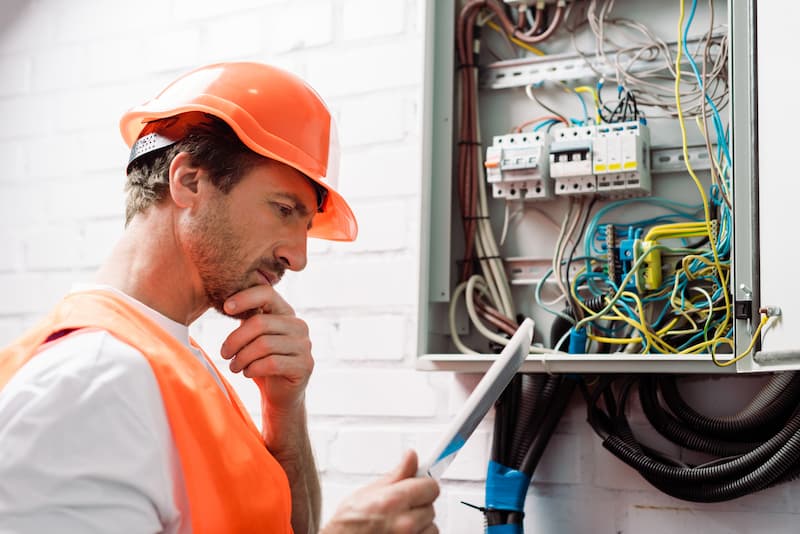Advanced technical support for electrical industry to drive success.
Advanced technical support for electrical industry to drive success.
Blog Article
Leading Tips for Effective Electric System Troubleshooting
Fixing electric systems calls for a methodical approach, grounded in an extensive understanding of electrical principles and safety and security procedures. By familiarizing oneself with circuit parts, using essential devices, and adhering to an organized evaluation method, experts can properly identify and fix concerns. However, the nuances of efficient repairing extend past simple technological knowledge; comprehending how to record searchings for and prioritize safety can significantly influence results. As we check out these critical components better, it comes to be clear that understanding this procedure is not simply useful yet important for success in the field.
Understand the Basics
Understanding the basics of electrical systems is important for effective troubleshooting, as a solid foundation allows professionals to diagnose and deal with problems much more effectively. A detailed grasp of electrical principles, such as voltage, current, resistance, and power, is crucial in recognizing the source of troubles. Voltage is the electric potential distinction that drives present through a circuit, while resistance opposes the flow of existing, influencing the total capability of the system.
Experience with circuit parts, including resistors, capacitors, diodes, and switches over, is also critical. Each part plays a distinctive function in circuit habits and can influence efficiency when malfunctioning. Additionally, recognizing collection and identical circuit configurations is vital, as these plans affect the circulation of voltage and existing within the system.
Moreover, expertise of security procedures is indispensable. Specialists should recognize potential hazards, such as shock and brief circuits, to carry out secure troubleshooting practices. By grasping these fundamental principles, professionals improve their capacity to conduct reliable diagnostics and repair work, ultimately causing enhanced performance and reliability of electrical systems. This foundational knowledge is the cornerstone of successful repairing ventures.
Gather Necessary Equipment
Efficient troubleshooting of electric systems requires the ideal set of devices to diagnose and settle problems precisely. A well-equipped technician can substantially enhance effectiveness and effectiveness in identifying troubles. Important tools include a multimeter, which determines voltage, current, and resistance, enabling specific examinations of electric components. Secure meters are also important for gauging existing without disconnecting the circuit, making certain security and benefit.
Additionally, shielded hand devices such as screwdrivers, pliers, and cord strippers are vital for securely controling electrical links. It is also advisable to have a circuit tester accessible to verify the presence of voltage in electrical outlets and cables. For more complicated systems, a thermal imaging video camera can aid find overheating parts, showing prospective failings.

Follow a Systematic Method
Having gathered the suitable tools, the next action in repairing electric systems is to comply with a systematic technique. A methodical strategy makes certain that specialists can identify mistakes efficiently and precisely, minimizing downtime and protecting against unnecessary fixings.
Begin by evaluating the system's schematic representations and requirements. Comprehending the style and operational criteria will give context for identifying issues. Next off, separate the issue area by utilizing a process of removal. This involves monitoring each part systematically, beginning from the source of power and functioning towards the load.
Utilize testing equipment, such as multimeters and oscilloscopes, to gather unbiased information regarding voltage, current, and resistance at different factors within the system. This empirical evidence will certainly lead your troubleshooting efforts and aid to confirm or remove possible root causes of failing.
Additionally, think about environmental aspects that might influence the system's efficiency, such as temperature changes or wetness ingress. A comprehensive examination of electrical wiring, links, and elements will certainly guarantee that all opportunities are made up.
Paper Your Findings
Detailed documentation is important in the fixing process of electric systems. This technique not only aids in understanding the origin cause of the problem yet also offers as a referral for future troubleshooting initiatives.

Furthermore, keeping a log of components replaced or repair services performed is very useful. This details sustains supply monitoring and can help analyze the durability and integrity of details parts.
Ultimately, the paperwork process must be comprehensive Related Site yet succinct, making it possible for very easy access and testimonial - electrical system troubleshooting. By focusing on thorough paperwork, service technicians can develop a valuable data base that not only help in existing troubleshooting but also encourages future upkeep initiatives, thus improving total system reliability

Prioritize Security Steps
Recognizing the intrinsic dangers connected with electric systems is critical for guaranteeing safety throughout troubleshooting. Electric shock, burns, and devices damage are just a few of the possible hazards that service technicians encounter. Focusing on security steps is not just a legal responsibility yet also an ethical necessary that safeguards both the specialist have a peek at these guys and the surrounding environment.
Before commencing any type of troubleshooting job, professionals need to wear suitable individual protective devices (PPE), including protected handwear covers, shatterproof glass, and flame-resistant clothing. Making certain that the job area is dry and devoid of clutter can substantially reduce the danger of accidents. Furthermore, it is vital to de-energize circuits before beginning any job, confirming that they are not endure using a multimeter or voltage tester.
Developing clear interaction protocols with employee is likewise vital; this guarantees that everybody recognizes possible risks and the standing of the electric system being worked with. Having an emergency reaction strategy in place can show important in the event of an event. By prioritizing precaution, technicians can efficiently reduce threats and foster a more secure workplace.
Final Thought
Reliable electric system repairing relies on a thorough understanding of basic principles and a methodical technique. Focusing on security procedures ensures the wellness of individuals included and the honesty of the electrical system.
Report this page